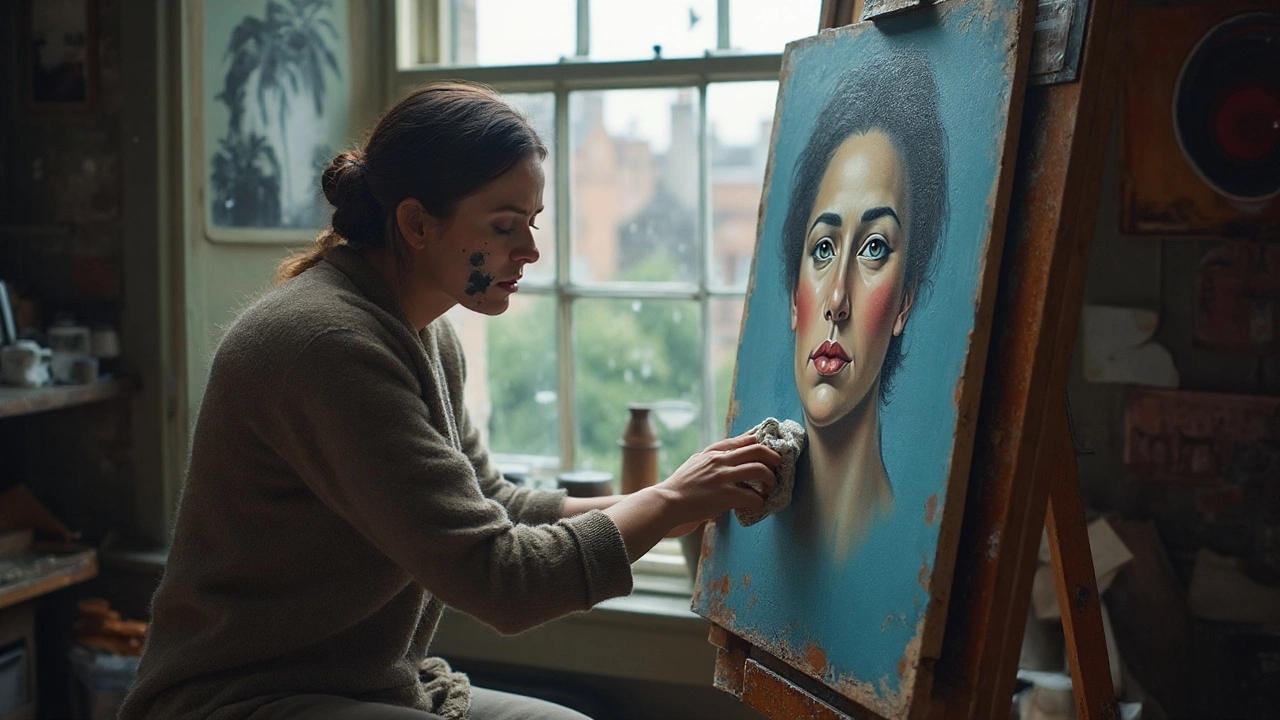How to Remove Paint from an Oil Painting Without Damaging It
If you’ve ever splashed the wrong colour onto an oil canvas, you know the panic that follows. The good news? With the right approach you can lift unwanted paint without ruining the original work. Below are practical steps you can try at home or in a small studio. No fancy jargon, just clear actions.
Gather the Right Supplies
Start with a few basic tools: a soft cotton rag, mineral spirits (or odor‑less paint thinner), a small flat‑head scraper, and a few sheets of blotting paper. If you’re dealing with a very old or valuable piece, add a few drops of professional conservation gel. Keep everything in a well‑ventilated area and wear gloves – safety first.
Test on a Hidden Spot
Before you work on the visible area, dab a tiny amount of mineral spirits on a corner where the paint is already damaged or less important. Wait a few seconds. If the surface looks unchanged and the paint lifts easily, you’re good to go. If the canvas or existing layers become slick or discolored, stop and consider a professional.
Once the test passes, dampen a clean rag with a small amount of mineral spirits. Gently press on the unwanted paint – don’t scrub. Oil paint lifts when it’s saturated, so a light press lets the solvent seep in and soften the excess colour. After a few seconds, you should see the paint start to dissolve.
Now take a fresh rag and blot the area, lifting the loosened paint away. Keep switching to clean sections of the rag to avoid spreading the paint back onto the canvas. If the colour is stubborn, repeat the damp‑press step a couple more times, but always keep the solvent amount low.
For thicker blobs, use a flat‑head scraper with a very gentle edge. Hold it at a shallow angle and scrape just enough to lift the paint. Press lightly – heavy scraping can dig into the original layers. After each scrape, wipe the edge with a damp rag to clear debris.
When the unwanted paint is gone, you’ll likely see a faint oily residue. Lightly wipe the spot with a fresh rag moistened with a mix of mineral spirits and a tiny drop of mild soap. This helps remove leftover solvent and restores the canvas’s natural feel.
Let the painting dry completely – this can take a few hours depending on humidity. Once dry, inspect the area under good light. If the surface looks uneven, you might need to lightly sand with a super‑fine sanding pad (400‑600 grit) and then apply a thin varnish to protect the repaired spot.
Remember, the key is patience. Rushing the process invites damage. If at any point the paint feels glued to the canvas or the colours start to bleed, stop and call a qualified conservator. Professional help can save a priceless piece when DIY methods reach their limits.
By following these steps you can safely remove stray oil paint, keep the original artwork intact, and avoid costly mistakes. Keep your supplies handy, test first, work gently, and you’ll be confident handling future paint mishaps.

10 Sep 2025
Smudged a face or picked the wrong color? Learn safe, proven ways to fix wet, tacky, and dry oil paint, from wiping-out to glazing, scraping, and repainting.
Continue reading...
